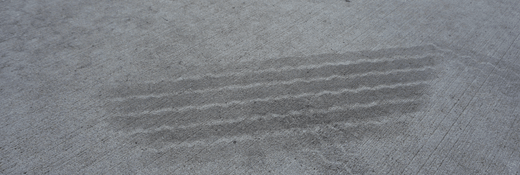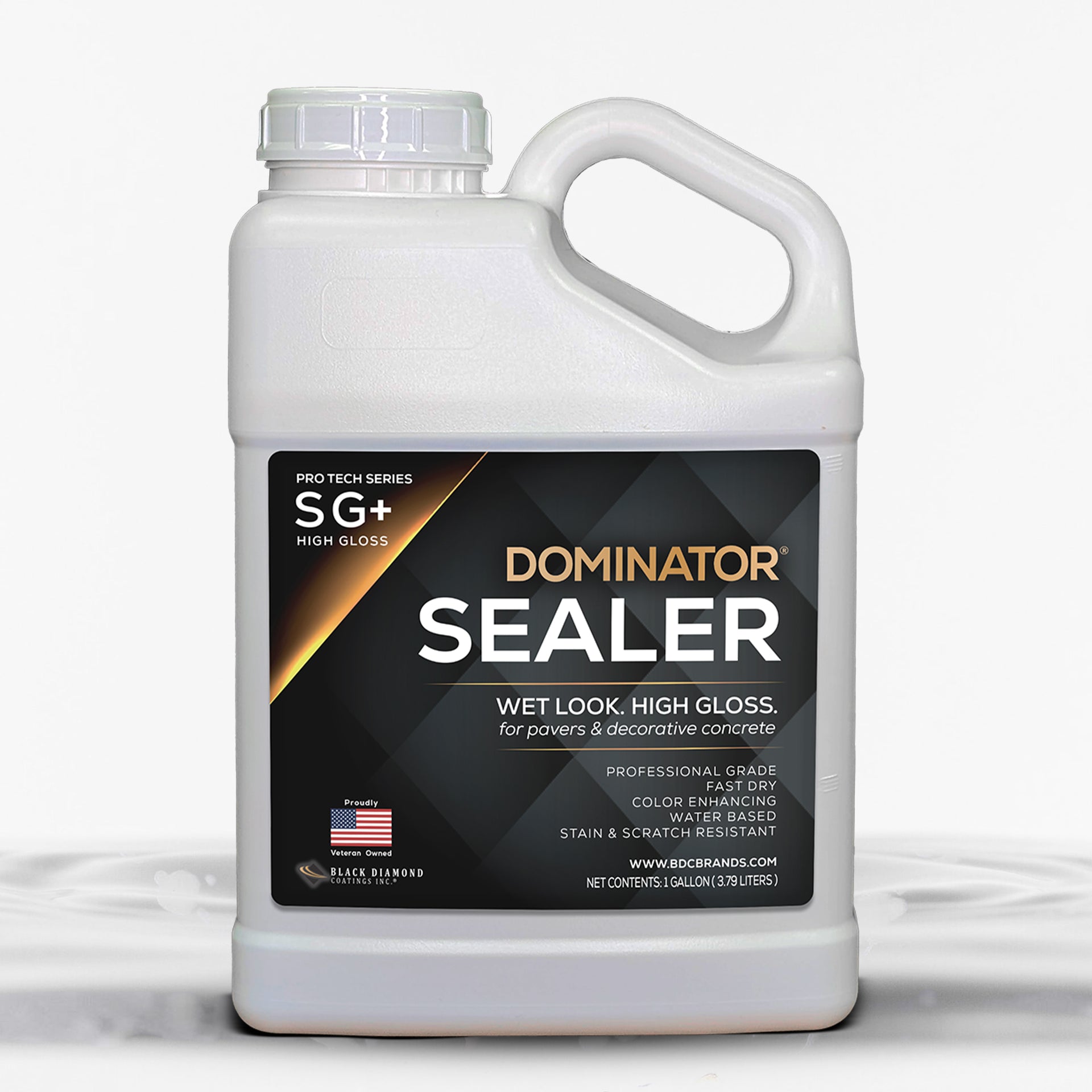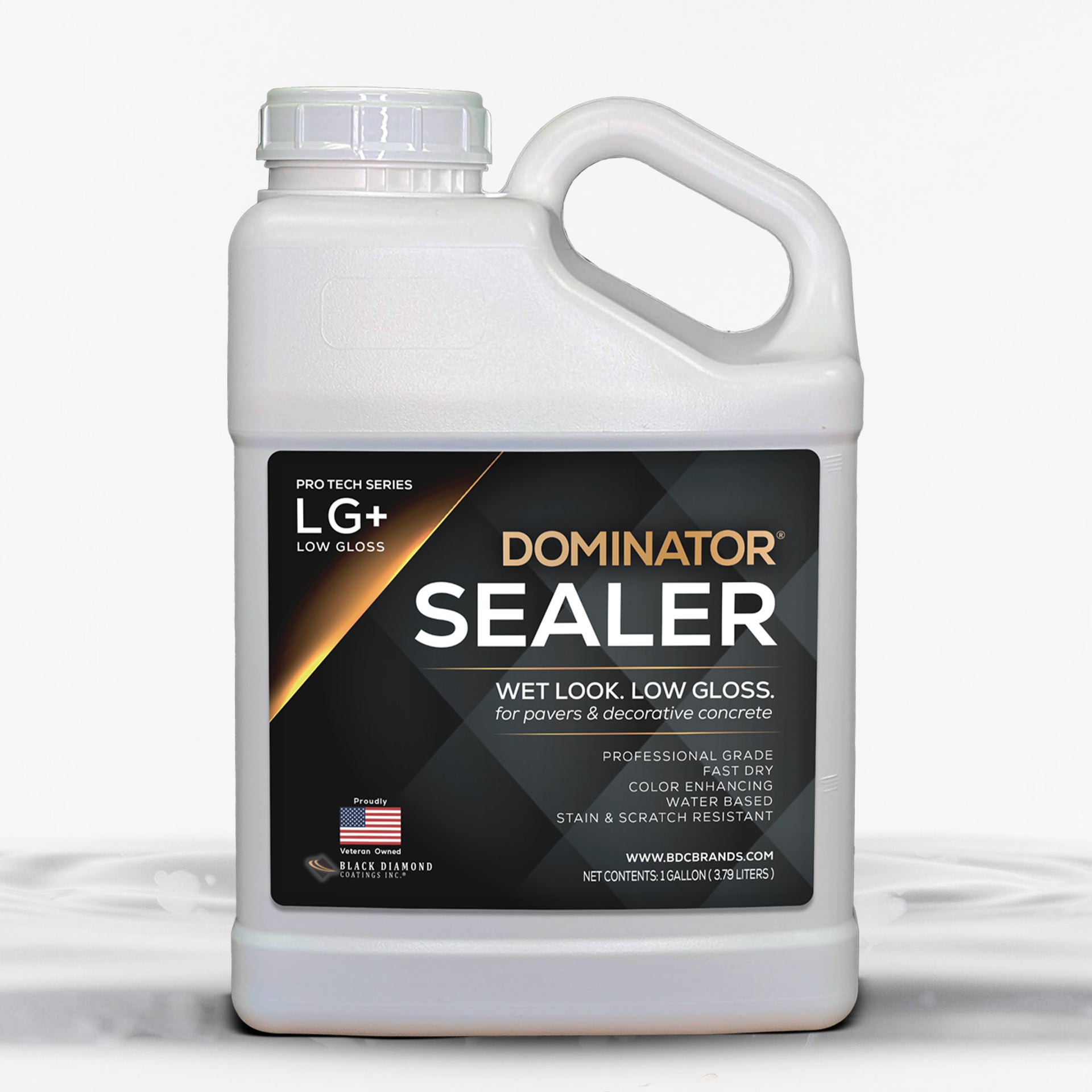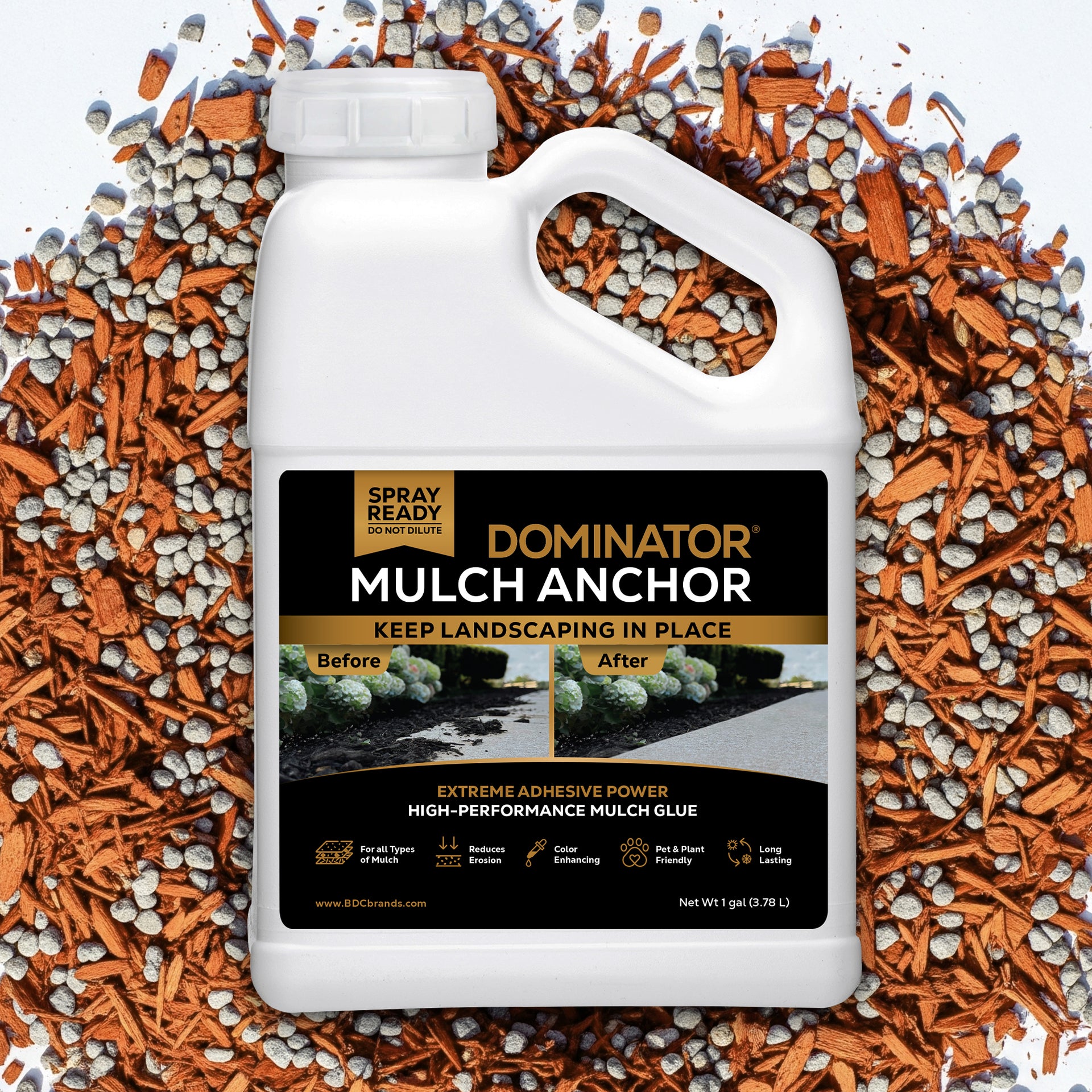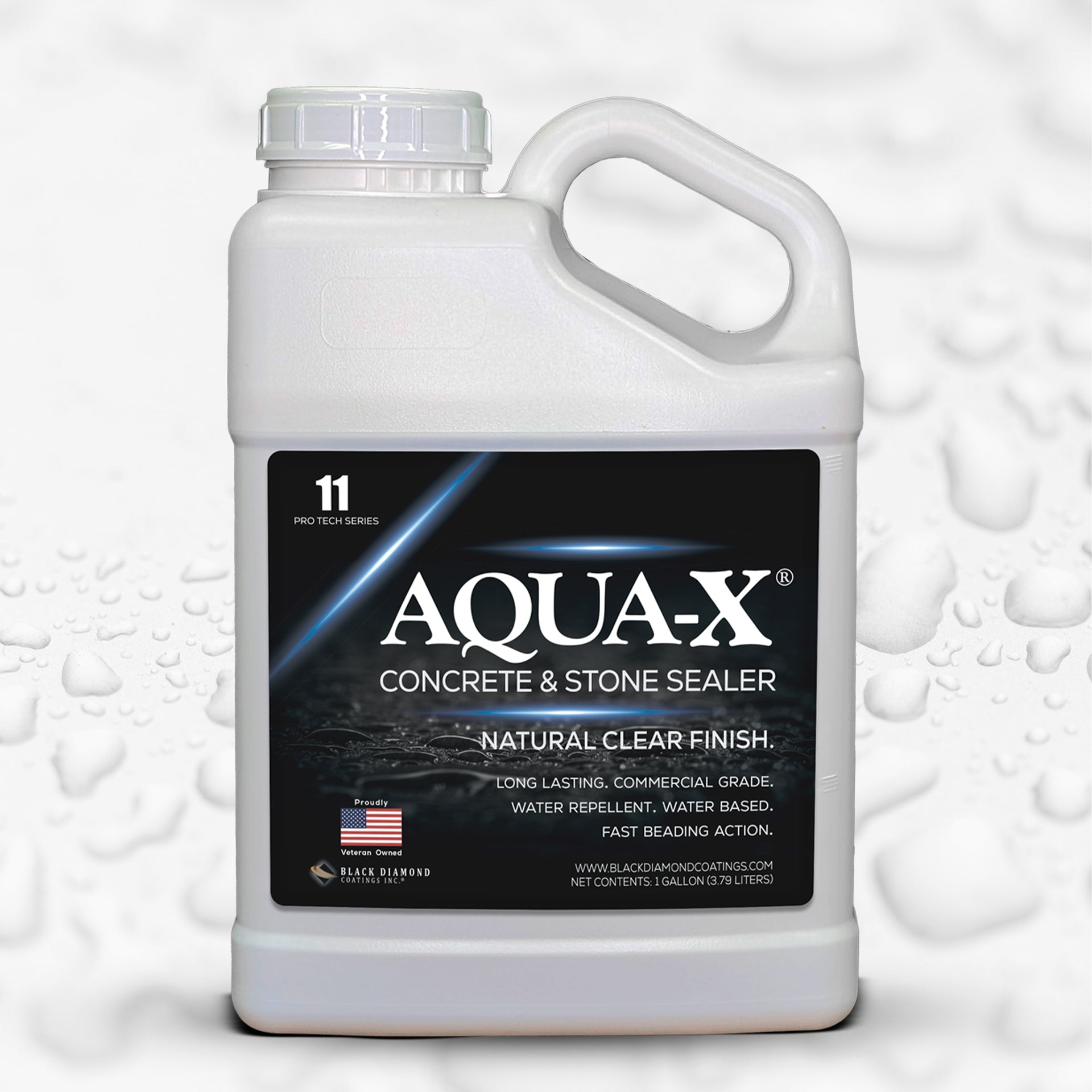How to Prevent Tire Marks on My Driveway
Tire marks are one of your common questions, as in, "Why do I have tire marks after I sealed my pavers?" To answer this, we need to understand how tire marks occur, on any surface, as well as what our research and development team considers and tests during product development of our sealers.
Why Does Hot Tire Pickup Occur?
When the summer sun is blazing and the humidity cranks up, there’s a perfect storm brewing on your driveway for stubborn tire marks. Here’s why these conditions make your surface especially vulnerable.
Tire Marks start from the asphalt onto the concrete sidewalk, then to the concrete pavers. Sealed or unsealed, fresh asphalt is a challenge.
- Rapid Surface Heating: If you apply sealer while the driveway is hot, the layer of sealer touching the surface can dry almost instantly. Add intense sunshine, and the top film dries quickly, too.
- Trapped Moisture: This double-whammy “flash drying” can trap moisture between the layers of sealer. The trapped water slows down the curing process, causing the sealer to stay soft for longer than normal.
- Power Steering and Tight Turns: When you’re maneuvering your vehicle—turning the wheel sharply to pull into a garage, or twisting the tires before you move—those soft, uncured layers are prone to marking. The friction of hot tires, especially with today’s stickier tread compounds, can leave imprint marks or scuffs on surfaces that haven’t fully hardened.
- High Humidity: Elevated humidity levels in the air also slow down how quickly the sealer cures. The softer the coating, the easier it is for tires to leave marks, especially with power steering or heavy vehicles.
Unsealed Pavers show tire marks distinctly, below.
So, if you notice more pronounced tire marks during a hot and sticky stretch, you’re not imagining things—Mother Nature just makes your driveway more vulnerable during these sweltering months.
Will Tire Marks on My Driveway Eventually Disappear?
Now, you might be eyeing those fresh tire marks on your newly sealed driveway and wondering if they're here for the long haul. The reassuring news? Most of the time, those marks are just part of the normal curing process and will fade away on their own.
Here's what's actually happening: when the sealer is applied—especially on warm days—heat from your tires and the sun can temporarily soften the fresh coating. Combine that with sharp turns or stationary spinning tires (picture maneuvering into a tight garage or twisting the wheels before moving), and tire marks can appear. It’s common, and it doesn’t mean there’s an issue with the quality of your sealer.
Patience is key. About 90% of that curing magic happens within the first 24 hours, but the final transformation can take a few weeks—particularly during hot, humid weather. Think of the surface as settling in, like a fresh loaf of bread cooling on the rack.
What should you do?
- Avoid adding a new coat just to cover tire marks. That’s like putting on a second layer of paint before the first has even dried—it can lock in moisture and make the problem worse.
- Let the sealer fully cure. As weeks pass and the surface hardens, those marks should fade and blend right in.
- If stubborn marks stick around after the surface has fully cured and the weather has cooled off, you can always touch up those spots.
So, give your driveway time—it’s doing its job, and those marks are simply along for the ride until everything’s set.
What type of sealer should you use to best avoid hot tire pickup?
The answer must be weighed out carefully to evaluate all the pros and cons that come with different types of sealers.
Pros and Cons of Epoxy and Polyurethane-Based Sealers
Generally, epoxy and polyurethane-based sealers have enhanced adhesion and crosslinking compared to acrylic sealers. Epoxy and polyurethane-based sealers have a higher degree of crosslinking within their chemical structure compared to acrylics, giving them an advantage against hot tire pickup.
However, with every advantage there is a disadvantage (or a few). Epoxy and polyurethane-based sealers are so highly crosslinked, they are impermeable, leading to many other common complaints such as turning white when water gets trapped underneath, a phenomenon that the lab refers to as “blushing”. This is especially important to note for exterior applications where water is imminent.
Additionally, the highly durable epoxy and polyurethane-based sealers usually require an expensive two-part process that requires specific mix ratios, rushes the project with short pot lives, and greatly extends dry times, which in turn can lead to a multitude of other issues in between the time you apply the sealer and the time it takes to cure.
Pros and Cons of Water-Based Acrylic Sealers
Water based acrylic sealers allow the substrate to breathe, allowing any excess moisture to escape freely, and therefore eliminates blushing issues seen with other types of sealer. This fact alone is why 99 percent of exterior concrete is sealed with an acrylic based sealer.
A water-based acrylic sealer is an easy one-part application with no pot life and requires only one to two hours to dry after application before exposure to moisture. Yet another advantage to water based acrylic sealers is that they are capable of being formulated to under 100 g/L VOC (volatile organic content) and are easily cleaned up with water, compared to solvent-based sealers that contain harsh chemicals and require heavy solvents to clean, making water based acrylic sealers the safest and easiest option for a beautiful DIY project or a commercial project.
How do I Prevent Hot Tire Pickup?
The Role of Temperature and Humidity in Sealer Curing and Tire Marks
Temperature and humidity play starring roles in how well your sealer cures—and in whether you end up with those frustrating tire marks right after your hard work.
On a scorching day or a sunbaked driveway, applying sealer can backfire. Here’s why: if the pavers themselves are hot, the layer of sealer closest to the surface might cure almost instantly, while the strong sun overhead can cause the top of the film to dry as well. This “flash-drying” can trap moisture—right in the middle where you can’t see it. The result is a sealer layer that remains soft underneath, even if the surface seems dry to the touch.
High humidity makes things even trickier. Moisture in the air slows down the evaporation of water from water-based acrylic sealers, extending the time your surface stays tacky and vulnerable to marks. Combine those conditions with things like cranking your wheels while stationary, or nudging your car back and forth into the garage, and you’ll notice the telltale curving streaks or power steering marks left behind.
The good news: patience pays off. As the sealer slowly completes its curing process and reaches full hardness, most of these temporary marks will fade significantly or disappear entirely. Still, if you want to minimize the risk, aim to apply sealer during moderate weather—think a cool, dry morning rather than a humid afternoon in July. This helps ensure both longevity and a professional-looking result.
Preparation Before Sealing To Minimize Tire Marks
Cleaning and degreasing your surface before sealing is a highly essential preparation step. Make sure all existing tire marks are completely removed prior to any sealer application.
One way you can test how much sealer you are likely to need before sealing is to perform a porosity test on your substrate. Place a dime-quarter size drop of water on your surface and pay attention to how long it takes for that water droplet to be absorbed into the surface. If the water does not fully absorb in 30 seconds, then your surface will need another cleaning to ensure that it will be able to take in the sealer for optimal performance. Once the water bead absorbs into your substrate in under 30 seconds, you are ready to begin your sealer application.
See our article related to the impact porosity plays in sealing surfaces: CLICK HERE.
Another key to preventing hot tire pickup is to avoid overapplication of your sealer; more is not always better. Applying thin coats of sealer to your surface will help to prevent hot tire pickup by minimizing the amount of sealer that sits on the surface.
Avoid Overapplication of Sealer to Minimize Tire Mark Issues
How Long Should You Wait Before Using Your Newly Sealed Asphalt?
Patience is key when it comes to your freshly sealed driveway. Even though it’s tempting to pull right in and admire your handiwork up close, giving the surface ample cure time is the best way to avoid unsightly tire marks—especially when temperatures are high or humidity is in the air.
As a general rule of thumb:
- Wait at least 48 hours before driving or parking your vehicle on newly sealed asphalt.
- If conditions are hotter, more humid, or the air feels especially sticky, it’s wise to extend that waiting period to 72 hours.
Think of it as letting a cake finish baking. Rushing the process could leave a permanent mark! Holding off just a bit longer helps ensure your driveway remains smooth and free of premature blemishes.
A distinct tire mark on travertine like the photo below is typically indicative of too much sealer or driving on the surface before it is cured.

Once the sealer is fully cured (hardened), it will help resist most stains and tire marks.
Should tire marks occur after the sealer has cured, generally a light wash with a mild detergent will remove the marks, unlike unsealed surfaces which will almost always require a pressure wash to remove.
For more information, before, during or after your project, please contact us at 1-800-270-4050. We have over 20 years’ experience in the industry and our knowledgeable staff is here to assist you in turning your next project from good to great!
Andrea Widmer | Technical Director
Related Articles:
